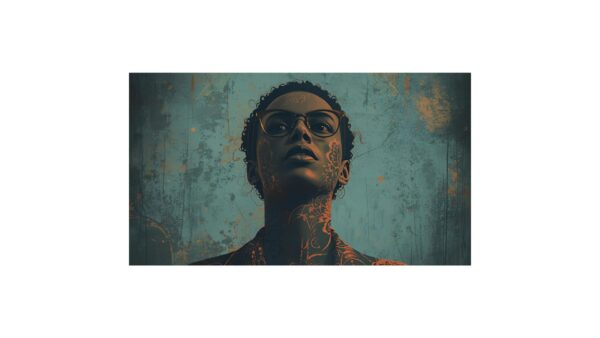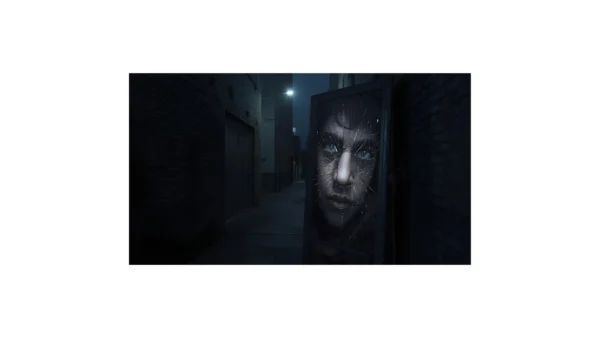
Stigma and Social Attitudes: Navigating the Landscape of Autism
Stigma and social attitudes, Autism Spectrum Disorder (ASD) is a complex neurodevelopmental condition affecting how a person perceives and interacts with the world. While awareness and understanding have increased in recent years, stigma and negative social attitudes remain significant challenges for autistic individuals and their families.
Here’s a breakdown of the key aspects of stigma and social attitudes surrounding autism:
Sources of Stigma:
- Lack of Understanding: Limited knowledge about autism can lead to misconceptions and stereotypes. Misinterpretations of autistic behaviors like social awkwardness or repetitive actions can fuel misunderstandings.
- Media Portrayals: Inaccurate or incomplete portrayals of autism in movies and television can perpetuate negative stereotypes and contribute to a sense of “otherness.”
- Fear of the Unknown: The unfamiliar aspects of autism can create fear and anxiety in some people. Social anxieties linked to autism can be misinterpreted as a lack of interest or a desire for isolation.
Impacts of Stigma:

- Social Isolation: Fear of judgment or negative reactions can lead to social withdrawal and isolation for autistic individuals. This can limit opportunities for friendship, romance, and belonging.
- Educational Barriers: Negative stereotypes can create challenges for autistic students, leading to lower expectations from educators and difficulty accessing appropriate support services.
- Employment Discrimination: Concerns about an autistic person’s ability to “fit in” or cope with workplace demands can lead to bias in the hiring process and limited career opportunities.
- Mental Health Issues: Social isolation and the stress of navigating stigma can contribute to anxiety, depression, and other mental health challenges for autistic individuals.
Shifting the Narrative:
- Education and Awareness: Increasing public understanding of autism through educational campaigns, media portrayals that celebrate diversity, and open conversations can dismantle stereotypes.
- Celebrating Neurodiversity: Shifting the focus to the unique strengths and perspectives of autistic individuals fosters acceptance and inclusion. Highlighting success stories can challenge preconceptions.
- Individual Advocacy: Autistic individuals can advocate for themselves and their needs. Sharing personal experiences and working with allies can promote empathy and understanding.
- Community Support: Stronger connections within the autism community offer support, mentorship, and a sense of belonging. Advocacy groups can create a louder voice for change.
- Mental health stigma (This is the most broadly searched term related to stigma and social attitudes)
Mental Health Stigma: The Elephant in the Room

Mental health stigma. It’s a big term that gets thrown around a lot, but what exactly does it mean? Imagine you’re at a party, and everyone seems happy and carefree. Suddenly, you feel a wave of anxiety or a dip in mood. You might hesitate to talk about it, worried about how others might react. That’s kind of what mental health stigma is all about.
Mental health stigma refers to the negative attitudes and beliefs people hold about mental health conditions. It’s like a big, invisible elephant in the room that prevents people from seeking help. Here’s the kicker: stigma isn’t just about how others view mental illness, it can also be the voice in your own head telling you something’s wrong with you for feeling down or anxious.
Why is it a problem? Well, mental health struggles are pretty common. Just like catching a cold, millions of people experience anxiety, depression, or other mental health challenges. But because of stigma, people are less likely to reach out for help. It’s like having a broken arm but refusing to go to the doctor because you’re afraid of what people might think.
Let’s break the silence and create a world where talking about mental health is as normal as talking about the weather.
- Social stigma examples (People often search for concrete examples)
Unfair Labels We All Hate

Social stigma refers to negative attitudes and beliefs that a society holds towards a certain group of people. These negative views can lead to discrimination, bullying, and even violence. Stigma can be based on many things, but here are some real-life examples we can all relate to:
- Mental Health: People with anxiety, depression, or other mental health conditions might face stigma. They might be seen as “weak” or “crazy,” which discourages them from seeking help.
- Physical Appearance: Unfortunately, society often has unrealistic beauty standards. People who don’t fit the mold, whether overweight, underweight, or with visible scars or disabilities, can experience stigma and bullying.
- Socioeconomic Status: People from lower-income backgrounds might face prejudice about their intelligence, work ethic, or even their parenting skills. This can make it harder for them to get ahead.
- Race and Ethnicity: Racism and prejudice based on race or ethnicity are serious problems. People of color might be stereotyped or discriminated against in areas like housing, employment, and even healthcare.
- Sexual Orientation and Gender Identity: LGBTQ+ individuals can face stigma and rejection simply for who they are. This can lead to social isolation and mental health problems.
It’s Important to Remember:
- These are just a few examples – social stigma can affect many groups of people.
- Stigma is based on prejudice and ignorance, not reality.
- Combating social stigma (Shows a proactive approach)
Busting the Myths: Proactive Ways to Fight Social Stigma
Social stigma can feel like a heavy weight, holding us back from living our best lives. It’s those negative beliefs and assumptions people hold about certain groups or situations. But here’s the good news: we can fight social stigma, and the best part? We can do it in a proactive way!
Here are some ideas to get you started:
1. Be Open and Honest: Talk openly about the topic or group facing stigma. Sharing your own experiences or stories of others can help people understand the reality behind the stereotype.
2. Educate Yourself and Others: Knowledge is power! Learn more about the topic and educate others in a friendly, approachable way. Focus on facts and positive experiences.
3. Challenge Stereotypes: When you hear someone make a negative generalization, speak up! Explain why the stereotype is inaccurate and offer a different perspective.
4. Celebrate Diversity: Look for opportunities to showcase the positive aspects of the group facing stigma. Share stories of success, achievements, and contributions.
5. Lead by Example: Be kind, accepting, and inclusive in your everyday interactions. Treat everyone with respect regardless of background or differences.
6. Use Social Media for Good: Spread positive messages and information online. Share stories, infographics, or videos that challenge stereotypes. But remember, be kind and respectful in your online interactions.
7. Support Advocacy Groups: Find organizations working to fight social stigma and offer your support. You can volunteer your time, donate, or simply spread the word about their work.
8. Be Patient and Persistent: Changing attitudes takes time. Don’t get discouraged if you don’t see results overnight. Keep spreading awareness and fighting for what’s right.
9. Focus on the Positive: It’s easy to get bogged down in the negativity of stigma. Instead, focus on the positive impact you can make by creating a more inclusive world.
10. Celebrate Progress! Take the time to acknowledge the progress we’ve made in fighting social stigma. Every step forward is a victory!
- Workplace stigma (Focuses on a specific area where stigma is prevalent)
Mental Health Stigma in the Workplace
Mental health struggles are a common experience, affecting millions of people around the world. While conversations about mental health are becoming more open, there’s still a stubborn stigma attached to it, especially in the workplace. This stigma can be a huge hurdle for people who are struggling with their mental health.
Here’s a closer look at why mental health stigma exists and how it plays out in the office:
- · Fear of Judgment: Many people worry that if they open up about a mental health issue, they’ll be judged as weak or incompetent. This fear can prevent them from seeking help or accommodations they might need.
- · Misconceptions: A lot of stigma stems from a lack of understanding about mental health conditions. People might have outdated or inaccurate ideas about what it means to have depression, anxiety, or other mental health challenges.
- · Impact on Career: There’s a misconception that mental health struggles will negatively impact your career. People might worry about being passed over for promotions or even losing their jobs altogether.
How Does This Stigma Play Out?
This stigma can manifest in a few ways in the workplace:
- · Isolating Behaviors: People might avoid talking about their mental health, fearing negative reactions from colleagues or managers. This can lead to feelings of isolation and loneliness.
- · Reduced Productivity: Mental health struggles can impact focus, concentration, and overall energy levels. This can make it difficult to perform at your best.
- · Unwillingness to Seek Help: The fear of stigma discourages people from seeking professional help or support from within the company. This can delay treatment and worsen symptoms.
Breaking Down the Walls: How Can We Combat This Stigma?
There are several ways businesses and individuals can work together to combat this stigma:
- · Open Communication: Companies can create a culture of open communication where employees feel comfortable talking about mental health. This could include mental health awareness campaigns, workshops, or employee resource groups.
- · Education is Key: Educating employees about different mental health conditions can help to dispel myths and create a more understanding environment.
- · Focus on Ability, Not Disability: People with mental health conditions often have a lot to offer the workplace. The focus should be on their abilities and contributions, rather than their struggles.
- · Support and Resources: Companies can offer support and resources for employees dealing with mental health issues. This could include access to mental health professionals, employee assistance programs (EAPs), or flexible work arrangements.
- 8.
- Social stigma effects (Highlights the consequences of stigma)
Social Stigma: The Weight of Unfair Labels
Social stigma is a fancy way of saying that people are treated unfairly because of something about them that others disapprove of. It’s like a negative label that sticks to someone, making it harder for them to live a normal life. Here’s how this unfair treatment can affect people:
- · Feeling Isolated and Alone: Stigma can make people feel like they don’t belong or that they can’t be themselves around others. This can lead to loneliness and depression. Imagine you love playing a certain game, but everyone makes fun of it. You might stop playing, even though you enjoy it, because you feel left out.
- · Missing Out on Opportunities: Sometimes, stigma can prevent people from getting the same chances as everyone else. For example, someone might not be hired for a job because of a disability, even though they’re perfectly qualified. It’s like being judged before you even get a chance to show what you can do.
- · Feeling Shame and Doubt: When people are constantly judged or discriminated against, it can make them feel ashamed of who they are. It can also make them doubt their own abilities, even if they are talented or capable. Imagine practicing hard for a competition, but everyone tells you you’ll never win. It can make you wonder if they’re right.
- · Reluctance to Seek Help: If someone fears being judged for a mental health issue or a difficult situation, they might be less likely to reach out for help. This can make things worse in the long run. It’s like having a broken arm but being afraid to go to the doctor because you think they’ll scold you for falling.
- 10.
- Challenging social stigma (Similar to combating stigma, but emphasizes resistance)
Shattering the Stereotypes: A Guide to Challenging Social Stigma
Social stigma. It’s that heavy feeling you get when someone makes an unfair assumption about you based on a group you belong to. Maybe it’s a judgemental look towards someone with a visible disability, or a dismissive comment about someone’s career choice. Whatever the situation, social stigma can be a real drag. But here’s the good news: we can fight back!
This guide focuses on challenging social stigma, which goes beyond just trying to ignore it. It’s about actively pushing back against those unfair assumptions and stereotypes. Here are some ways you can do just that:
1. Be a walking, talking example: Sometimes, the best way to challenge a stereotype is to simply be yourself and excel in your chosen field. For example, if someone assumes all athletes are unintelligent, prove them wrong by rocking the classroom and the playing field.
2. Open your mouth (kindly): When you hear someone making a prejudiced statement, don’t stay silent. Speak up in a calm and respectful way. Explain why the comment is hurtful and offer a different perspective.
3. Knowledge is power: Educate yourself and others about the group facing the stigma. Learn the facts and share them with others. The more people who understand the reality, the less power the stereotype has.
4. Find your tribe: Surround yourself with people who celebrate diversity and challenge stereotypes. They’ll be your cheerleaders and support system in this fight.
5. Use your voice (online and off): Social media can be a powerful tool for raising awareness and sharing positive stories. Use your platform to challenge stereotypes and promote understanding.
6. Lead by example: Treat everyone with dignity and respect, regardless of background or perceived limitations. By setting a positive example, you inspire others to do the same.
7. Be patient, but persistent: Changing social attitudes takes time. Don’t get discouraged if you don’t see results overnight. Keep speaking out and chipping away at the stereotypes.
- Hidden stigma (Focuses on less-acknowledged forms of stigma)
The Sneaky Stigmas: Hidden Biases We Don’t Even Realize
We all know about some big, obvious forms of stigma, like discrimination based on race or gender. But what about the sneakier kind? These are the hidden biases that linger just below the surface, impacting our actions and judgments without us even realizing it.
Here are a few examples of hidden stigmas:
- The “Single and Happy” Myth: Society often throws shade at people who choose to be single. There’s a subtle assumption that something must be wrong with you if you’re not coupled up.
- The “Workaholic Hero” Trap: Praising someone for constantly working long hours can make those who prioritize a healthy work-life balance feel judged.
- The “Beauty Standards Burden”: Narrow definitions of beauty can lead to subconscious biases against people who don’t fit the mold. This can affect everything from social interactions to job opportunities.
- The “Introvert vs. Extrovert” Stereotypes: Introverts are often seen as less friendly or outgoing than extroverts, even though introversion simply describes how someone gains energy.
These hidden stigmas can be tough to spot because they’re often ingrained in our culture. But by becoming aware of them, we can start to challenge these biases and create a more inclusive world.
Here are some things you can do to fight hidden stigma:
- Question your assumptions: Sometimes, a little self-reflection can go a long way. Think about the messages you receive from society and challenge any that seem unfair.
- Celebrate differences: Embrace and appreciate the unique qualities everyone brings to the table.
- Be an ally: Speak up when you see someone being judged unfairly based on a hidden stigma.
- Spread awareness: Talking about hidden stigmas can help others become more conscious of their own biases.
- Unconscious bias (Related to social attitudes and forming perceptions)
Unconscious Bias: The Sneaky Stuff That Shapes How We See the World
Imagine you’re walking down the street and see someone you don’t know. In a split second, your brain makes all sorts of judgments about them. Maybe they’re dressed in a business suit, so you think they’re important. Perhaps they’re wearing headphones, so you guess they like music. These are just snap judgments, and they’re influenced by something called unconscious bias.
What is Unconscious Bias?
Unconscious bias is basically those automatic thoughts and feelings we have about people or groups, without even realizing it. It’s like a mental shortcut our brain takes based on past experiences, stereotypes, or cultural messages we’ve picked up along the way.
Here’s the catch: These biases can be unfair and inaccurate. For example, you might unconsciously think someone dressed in baggy clothes is less intelligent, even though that’s totally not true!
Why Does Unconscious Bias Matter?
Unconscious bias can affect our decisions in all sorts of situations, from who we choose to be friends with to how we treat people at work. Here are some examples:
- Job Interviews: An interviewer might unconsciously favor a candidate who reminds them of themselves, even if another candidate is actually more qualified.
- Making Friends: You might gravitate towards people from similar backgrounds, even though you could miss out on meeting amazing people who are different.
- Everyday Interactions: You might treat someone differently based on their race, gender, or age, without even realizing it.
- Stereotypes and prejudice (Underlines the foundation of negative social attitudes)
Unconscious Bias: The Sneaky Stuff That Shapes How We See the World
Imagine you’re walking down the street and see someone you don’t know. In a split second, your brain makes all sorts of judgments about them. Maybe they’re dressed in a business suit, so you think they’re important. Perhaps they’re wearing headphones, so you guess they like music. These are just snap judgments, and they’re influenced by something called unconscious bias.
What is Unconscious Bias?
Unconscious bias is basically those automatic thoughts and feelings we have about people or groups, without even realizing it. It’s like a mental shortcut our brain takes based on past experiences, stereotypes, or cultural messages we’ve picked up along the way.
Here’s the catch: These biases can be unfair and inaccurate. For example, you might unconsciously think someone dressed in baggy clothes is less intelligent, even though that’s totally not true!
Why Does Unconscious Bias Matter?
Unconscious bias can affect our decisions in all sorts of situations, from who we choose to be friends with to how we treat people at work. Here are some examples:
- Job Interviews: An interviewer might unconsciously favor a candidate who reminds them of themselves, even if another candidate is actually more qualified.
- Making Friends: You might gravitate towards people from similar backgrounds, even though you could miss out on meeting amazing people who are different.
- Everyday Interactions: You might treat someone differently based on their race, gender, or age, without even realizing it.
- Social justice and stigma (Connects the fight against stigma to broader social movements)
Stigma and social attitudes are deeply intertwined. Stigma refers to a negative association attached to a person or group, often based on prejudice, misunderstanding, or fear. Social attitudes are the prevailing beliefs, opinions, and feelings within a society. When negative social attitudes solidify into stigma, it can have a profound impact on individuals and entire communities.
Here’s how stigma and social attitudes work together:
- Negative Media Portrayals: Media representations can reinforce negative stereotypes, fueling social stigma. Imagine a news report sensationalizing mental illness, contributing to the stigma people with mental health conditions face.
- Lack of Awareness: Limited knowledge about a group or condition can breed fear and misunderstanding. A lack of awareness about autism can lead to social stigma and exclusion for autistic individuals.
- Historical Roots: Historical biases can linger, shaping present-day social attitudes. Centuries-old prejudices against people with disabilities can still influence how they’re treated today.
The Effects of Stigma and Social Attitudes:
- Reduced Help-Seeking: Fear of stigma often prevents people from seeking help for mental health issues, substance abuse, or other conditions.
- Discrimination in Employment: Social stigma can lead to hiring biases and workplace discrimination against individuals with certain characteristics.
- Social Isolation and Loneliness: The fear of judgment can lead to social isolation and loneliness for those facing stigma.
- Mental Health Decline: The stress of stigma can exacerbate mental health problems and create a vicious cycle.
Combating Stigma and Social Attitudes:
- Education and Awareness: Educating the public about mental health, disabilities, and other stigmatized topics is crucial.
- Positive Representation: Promoting positive and diverse portrayals in media can challenge stereotypes and change social attitudes.
- Advocacy and Storytelling: Sharing personal stories and experiences can foster empathy and understanding.
- Policy and Legislation: Enacting anti-discrimination laws and promoting inclusive policies can create a more equitable society.
Overcoming stigma and social attitudes requires a multi-pronged approach. By promoting understanding, challenging biases, and offering support, we can create a world where everyone feels included and valued.
Unfortunately, Google Scholar itself doesn’t offer a built-in way to directly export formatted references. However, I can still provide you with some relevant scholarly resources on unconscious bias, along with tips for finding them on Google Scholar:
Resources:
- “Unconscious Bias in Work Performance Evaluations: A Meta-Analysis” by Rudman, L. G., Ryan, M. K., & Mescher, J. (2009). This research paper examines how unconscious bias can influence performance evaluations in the workplace. (Search for this title and publication year on Google Scholar)
- “The Implicit Association Test” by Greenwald, A. G., McGhee, D. E., & Schwartz, J. L. (1998). This article explores a popular tool used to measure unconscious bias, known as the Implicit Association Test (IAT). (Search for this title and publication year on Google Scholar)
- “Microaggressions in Everyday Life: Race, Gender, and Sexual Orientation” by Sue, D. W., Caétano, L. C., Crespi, E. L., & Aguinaga, B. A. (2010). This book delves into the concept of microaggressions, which are subtle forms of bias experienced by marginalized groups. (Search for the book title and authors on Google Scholar)
- “Blind Spot: Hidden Biases of Good People” by Banaji, M. R., & Greenwald, A. G. (2013). This book explores the nature of unconscious bias and its impact on our behavior. (Search for the book title and authors on Google Scholar)
FAQs:
Unconscious bias, also known as implicit bias, can have a significant impact on our thoughts, behaviors, and decisions. Here are 10 frequently asked questions to help you understand this complex topic better:
What is unconscious bias?
Unconscious bias is an automatic prejudice or stereotype we hold about people or groups without even realizing it. These biases can be based on factors like race, gender, age, appearance, or disability.
How does unconscious bias develop?
Unconscious bias develops throughout our lives from various sources, including personal experiences, societal messages, and cultural norms. We absorb stereotypes from media, family, and even the way information is presented around us.
Does everyone have unconscious bias?
Yes, everyone has unconscious bias. It’s a natural part of the human brain’s way of processing information quickly. However, the key is becoming aware of these biases and learning to manage them.
- What are some examples of unconscious bias?
- Gender bias: Assuming a woman is better suited for administrative work than a leadership role.
- Racial bias: Unconsciously associating a particular race with a negative stereotype.
- Age bias: Overlooking an older applicant for a job because of assumptions about their skills.
- How can unconscious bias affect me?
Unconscious bias can influence your decisions in areas like hiring, friendships, and everyday interactions. It can also lead to feelings of exclusion or unfair treatment for others.
How can I become more aware of my unconscious bias?
There are several ways: Implicit Association Tests (IATs) can reveal hidden biases. Reflecting on your own experiences and reactions can also be helpful.
What can I do about unconscious bias?
Once aware of your biases, you can challenge them actively. Seek out information and experiences that counter stereotypes. Practice empathy and focus on getting to know individuals for who they are.
How can organizations address unconscious bias?
Organizations can implement diversity and inclusion training, institute blind resume reviews, and foster a culture of open communication to address unconscious bias.
What are the benefits of addressing unconscious bias?
By addressing unconscious bias, organizations create a more fair and inclusive environment, leading to better decision-making, innovation, and employee satisfaction.
Where can I learn more about unconscious bias?
Many resources are available online and in libraries. Books like “Blind Spot: Hidden Biases of Good People” by Banaji and Greenwald offer in-depth exploration. You can also search for unconscious bias training programs offered by diversity and inclusion organizations.



